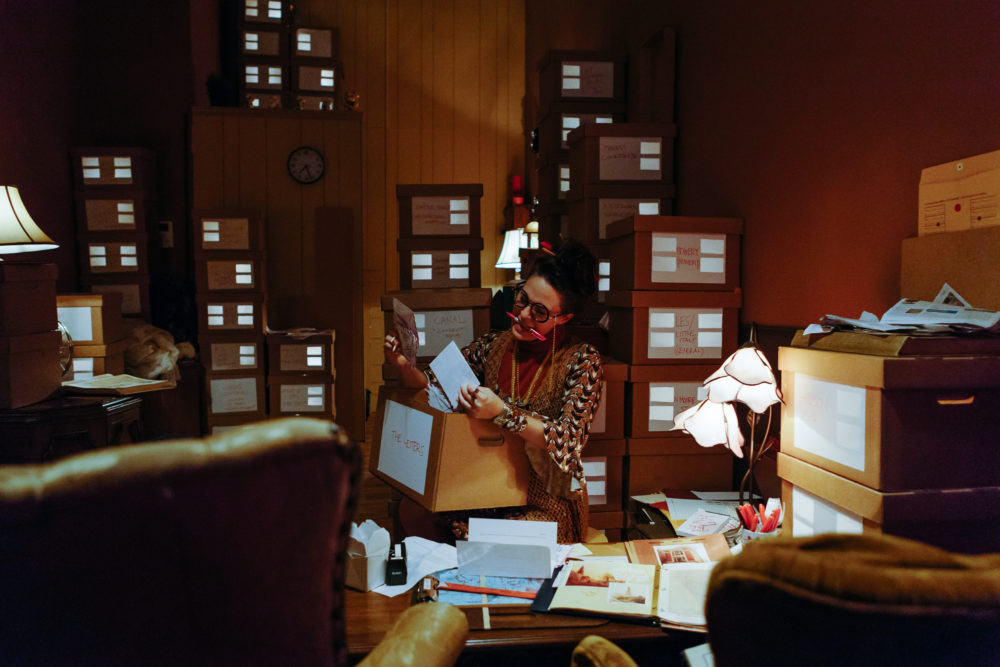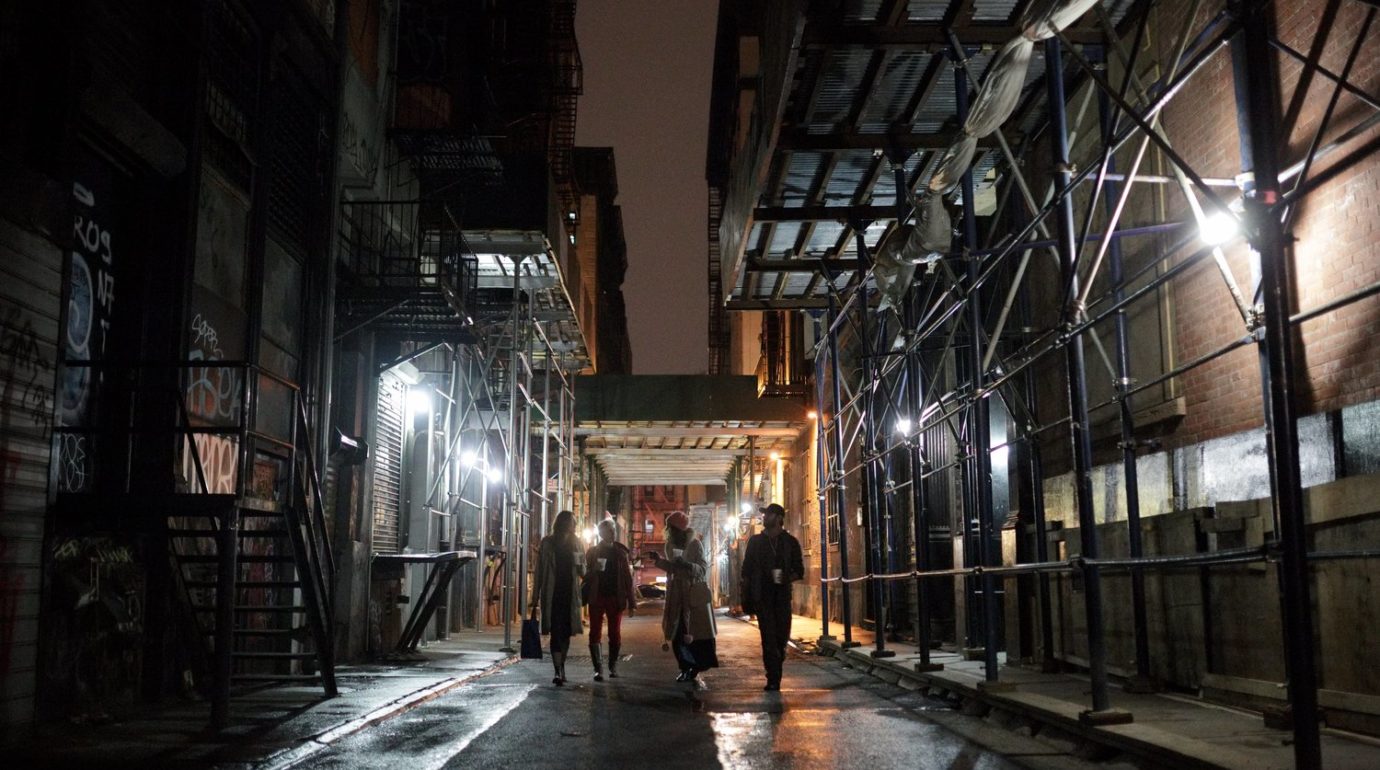CHALLENGE
Collaborate with a corporate brand on a stage production
PLAN
Create a theatre piece that is both artistically sound and promotes audience engagement with the brand
WHAT WORKED
Integrating the brand seamlessly into the production
WHAT NEEDS WORK
Tiny audiences mean the production can only accommodate 24 people an evening
WHAT’S NEXT
Scaling this model up to large audiences in a proscenium theatre
It began over wine. Two years ago, a friend recommended that Matthew Proctor attend a show. It was called Sweet and Lucky, and it was an immersive piece by a Brooklyn-based company called Third Rail Projects about memory and the objects that hold it. Proctor was so affected by the show that afterward, he was sitting with some colleagues at a bar nearby “discussing it and reliving it and rehashing it.”
Proctor is a creative director for Motive, a marketing and advertising agency which does ad campaigns for such companies such as Pepsi and Native Eyewear. Sitting with that wine and talking about theatre made Proctor see a natural fit. “It’s two of the great things in life!” he says with a laugh.
He thought of one of Motive’s clients, Macallan scotch whiskey, and wondered if he could create an “opportunity of aligning the brand with the pillars of art and theatre, almost as a reflection of the Macallan itself,” says Proctor. “Art and craftsmanship is rooted in the DNA of Macallan.” He thought a partnership between Macallan and Third Rail might be designed to “relive and conjure up the emotions and feelings we had with something that’s entirely new, specifically built for spirits drinkers.”
The results of that collaboration is Third Rail’s new Behind the City, to be produced in Manhattan June 22 to July 1. In case viewers don’t know a whiskey company is behind this show, fear not; the website puts the brand’s name at the top: “Macallan presents Behind the City by Third Rail Projects.”
Being approached by corporate brands to create work for them is now a common occurrence for Third Rail, which has in the past also created work with nonprofit theatres such as Lincoln Center and the Denver Center (and whose popular immersive show Then She Fell is still running in Brooklyn after five years). But Third Rail co-artistic director Zach Morris was hesitant to partner with a corporation, because such funding usually comes with more strings attached (for instance, required name-dropping of the product).
“One of the current buzzwords in the marketing world is the creation of experiences and the creation of immersive events,” Morris explains. “We’ve really noticed an acute interest in this type of work coming from sectors far beyond the theatre and arts world; it has permeated into a broader culture, in terms of marketing agencies reaching out and organizing events that are intended to feel experiential.”
From the get-go, Morris was adamant that his theatre company would not be creating a commercial for whiskey. “We’re not interested in making a work about your product—there are folks who do that,” he recalls telling the Macallan representatives. “We are interested in creating the work that Third Rail creates, and if you’re interested in supporting that work and if you’re interested in operating as a funder, we can totally have that conversation.”
Behind the City is built to be experienced in pairs, as audiences of two are led through various buildings in Lower Manhattan for an exploration of how memories can impact physical locations. It’s designed to serve 24 audience members per evening, and tickets are free (though as of presstime, completely sold out). So what’s in this for Macallan? What do they get out of a collaboration with a small performance piece that will reach a fraction of the eyeballs that a Facebook banner ad would? For Proctor, the show’s intimacy is a feature, not a bug.
“For us it aligned with the idea of, how do you share something like the Macallan? It’s not something you drink with 40 friends. That’s what drew us to it, this idea of having that powerfully memorable moment with someone really important, and the brand.”
“The brand” part means that at key points in the show, audience members will be offered a Macallan cocktail, usually during a moment that calls for some imbibing. Trying to figure out how to integrate the brand—and how much to do so—was a sticking point for Macallan and Third Rail.
“We have had some hard conversations, and I am happy to have had them,” Morris remarks delicately. Adds Proctor, “we never wanted to hit the viewer over the head” with the brand.
What the two sides settled on was a multi-part evening. Attendees show up to a pop-up speakeasy where Macallan bottles are behind the bar and custom cocktails are served. Then at show’s end, they are led back to the speakeasy, hopefully to discuss what they just experienced over more drinks (performances from local bands and poets may entice them to stay, and the speakeasy is then also opened to the general public).
“We created really clear boundaries between what was a branded situation, the moment where Macallan was able to be celebrated, and a moment that was distinctly Third Rail’s work,” says Morris. “We explicitly said in the contract that the name Macallan will not be explicitly mentioned in the show itself.”

After a test run in December, both entities are satisfied with the partnership and open to collaborating again. When asked whether such partnerships would be possible between a traditional proscenium theatre company and a corporation, Proctor hesitates.
“How can someone to sit in an audience and have a branded moment—unless it was like, there’s 30 people onstage and it’s a raucous moment and it’s a Bud Light program and everyone raises a glass and it’s a party,” he wonders aloud. He believes such branded moments would work better with immersive theatre, where audiences can get “hands-on and tactile” with the product, which makes it easier to “form a bond” with the brand. He does encourage theatre companies interested in collaborating with brands to contact him with ideas.
But Morris believes that such corporate partnerships are possible in any setting, especially now that traditional funding structures such as foundations are drying up and the National Endowment for the Arts is under constant political threat.
“I think the value is that artists are able to offer something to the public, society, and culture that is really needed right now, and that is yearned for: an exceptional, well-crafted experience,” he says. “The question really is, how does that make sense for a company, for a corporation?” Morris also adds that for these types of partnerships, artists do not need to sell out their integrity and vision to make a kind of commercial. “In fact, your partner is better served if you don’t,” he says.
Morris would not comment on how much money Macallan put toward Behind the City, but he did confirm that the budget of the production was on par with other Third Rail experiences (which usually range from $250,000 to $500,000).
These days, as consumers are being barraged by banner ads (and consequently installing ad-blocking software) and fast-forwarding through commercials, capturing and sustaining audience attention and engagement is a constant challenge for corporations. Experiential programming offers a new avenue, and it meets a new demand. “Consumers want to spend more of their money on experiences, not just on products,” as Proctor puts it.
Morris suggests that a company sponsoring a show may send an important signal to a consumer.
“I know I try to put my dollars with organizations or companies that share similar values to me,” says Morris. “The question about this engagement is: Does somebody hear about Behind the City on the internet and they’re like, ‘Oh wow, that’s pretty cool and also kind of cool that Macallan made that possible and supported the work of these artists and supported the ability of the public to come and see it’? Maybe when they go to the bar the next time, they’ll think, ‘You know what, I’d like a whiskey.’”
Raise a glass to new opportunities.





